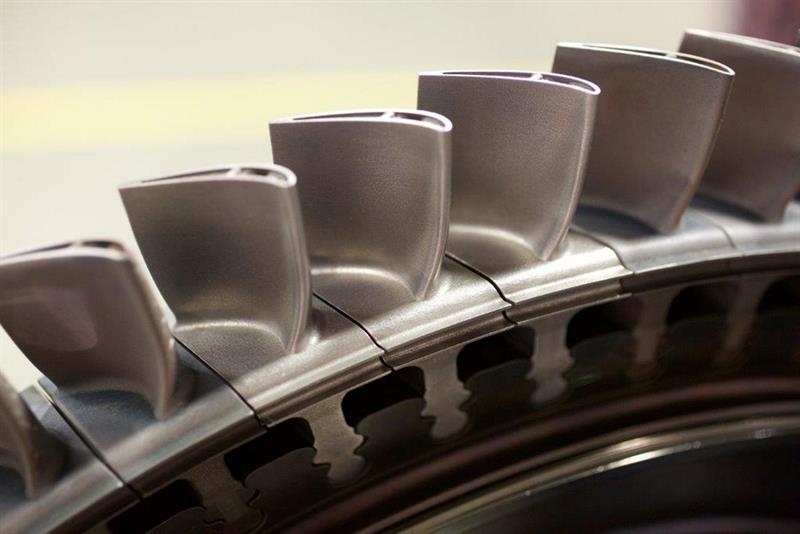The tests were undertaken at the Siemens testing facility in the industrial gas turbine factory in Lincoln, with the blades printed at Materials Solutions in Worcester, a company recently acquired by Siemens. Materials Solutions specialises in the AM-production of high performance parts for high temperature applications in turbomachinery, where accuracy, surface finish and material quality are critical.
Full-load engine tests for both conventional and a completely new designed gas turbine blades were undertaken, with Siemens successfully validating multiple AM-printed turbine blades against a conventional blade design at maximum engine conditions. The AM-produced blades employed completely revised and improved internal cooling geometry, made possible by 3D printing, and tests were undertaken at 13,000 rpm and at temperatures beyond 1,250 °C degrees.
The blades were installed in a Siemens SGT-400 industrial gas turbine with a capacity of 13 MW. The AM turbine blades are made out of a powder of high performing polycrystalline nickel superalloy, allowing them to endure high pressure, hot temperatures and the rotational forces of the turbine's high speed operation.
At full load each of these turbine blades is travelling at over 1,600 km/h, carrying 11 tons or equivalent to a fully loaded London bus, is surrounded by gas at 1,250 °C and cooled by air at over 400 °C. The advanced blade design tested in Lincoln provides improved cooling features that can increase overall efficiency of the Siemens gas turbines.
Says Willi Meixner, CEO of the Siemens Power and Gas Division: “This is a breakthrough success for the use of additive manufacturing in the power generation field, which is one of the most challenging applications for this technology. Additive Manufacturing is one of our main pillars in our digitalisation strategy.
“The successful tests were the result of a dedicated international project team with contributions from Siemens engineers in Finspång, Lincoln and Berlin, together with experts from Materials Solutions.
“In just 18 months, they completed the entire chain from component design and AM material development to new methods for lifing simulations and quality controls. With our combined know-how in 3D printing, we will continue to drive the technological development and application in this field.”

The blades had to endure 13,000 revolutions per minute and temperatures beyond 1,250 degrees Celsius.




